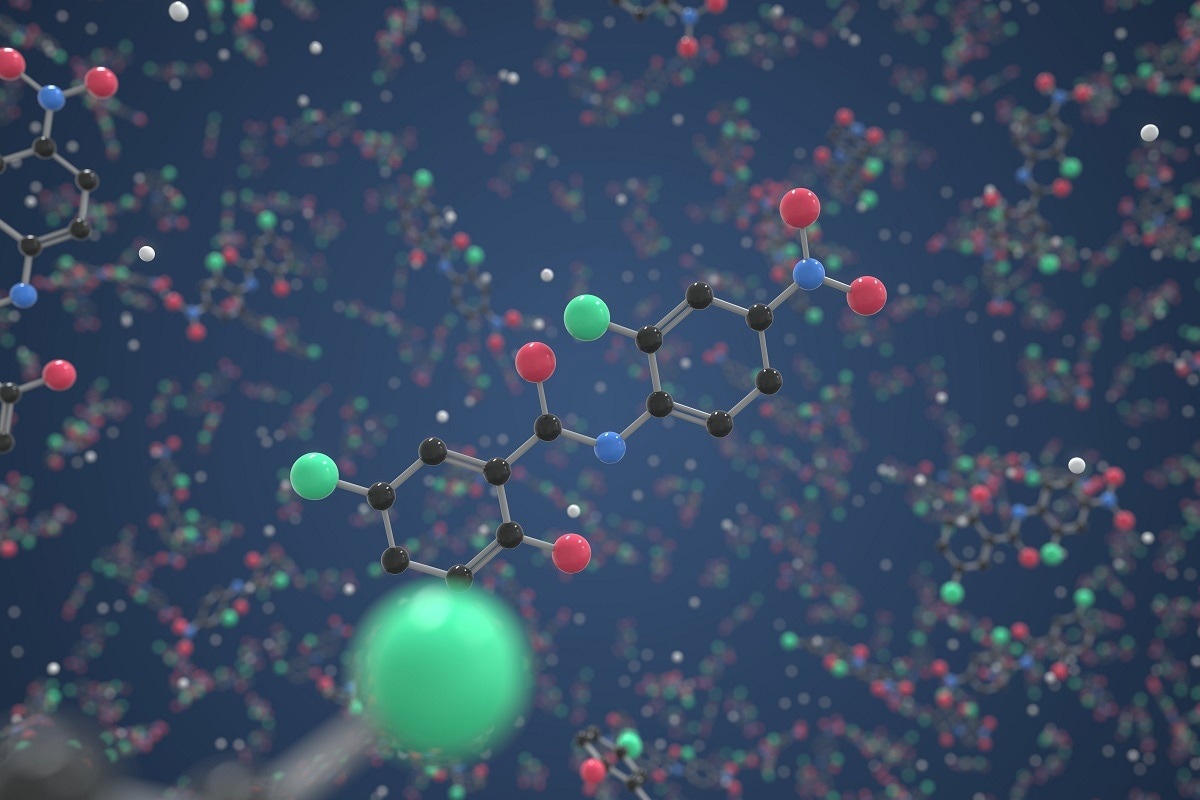The coronavirus disease 2019 (COVID-19) pandemic, caused by severe acute respiratory syndrome coronavirus 2 (SARS-CoV-2), continues to threaten human health and public safety worldwide.
As of July 2022, the infection has affected approximately 561 million individuals globally, along with being responsible for 6.3 million deaths. Although several vaccines against SARS-CoV-2 have been developed, their efficacy is challenged due to the emergence of new variants. Therefore, new anti-SARS-CoV-2 therapeutics must be developed along with vaccination to treat COVID-19 patients.
 Study: Orally administered niclosamide-based organic/inorganic hybrid suppresses SARS-CoV-2 infection. Image Credit: Irina Anosova/Shutterstock
Study: Orally administered niclosamide-based organic/inorganic hybrid suppresses SARS-CoV-2 infection. Image Credit: Irina Anosova/Shutterstock

 *Important notice: bioRxiv publishes preliminary scientific reports that are not peer-reviewed and, therefore, should not be regarded as conclusive, guide clinical practice/health-related behavior, or treated as established information.
*Important notice: bioRxiv publishes preliminary scientific reports that are not peer-reviewed and, therefore, should not be regarded as conclusive, guide clinical practice/health-related behavior, or treated as established information.
Currently, clinical trials are being conducted with two new anti-SARS-CoV-2 pills, Lagevrio (Molnupiravir) and Paxlovid. However, the long-term safety of these drugs is unknown. Moreover, the anti-viral activity of these drugs can be lowered due to structural changes in the target viral enzyme. Therefore, a broad spectrum antiviral agent is required that can be used for many viruses such as paramyxoviruses, flaviviruses, filoviruses, picornaviruses, togaviruses, and bunyaviruses which may lead to future pandemics.
One such approach is to use niclosamide (NIC) which is known to possess broad-spectrum antiviral activity. A 2021 study reported that NIC was capable of inhibiting SARS-CoV-2 proliferation through autophagy. However, NIC has low aqueous solubility, which could trouble the systemic absorption of orally administered NIC. This challenge can be overcome by chemical modification of NIC that could increase its solubility or a drug repurposing technology with pharmaceutically inert substances.
A new study posted to the pre-print server bioRxiv* aimed to develop a NIC oral formulation by using MgO, which is an FDA-approved antacid. The NIC-MgO oral formulation was coated with hydroxy propyl methyl cellulose (HPMC), further increasing its pharmacokinetic (PK) properties. Finally, the anti-viral efficacy of NIC-MgO-HPMC was assessed in a hamster model infected by SARS-CoV-2.
About the study
The study involved the preparation of NIC-MgO and NIC-MgO-HPMC by solid-state intercalation reaction followed by cetrimonium bromide (CTAB) stabilized NIC-MgO and MgO Nanoparticles (NP) preparation. After that, the NIC drug content was analyzed along with in vitro drug release.
Fourier transforms infrared (FT-IR) spectra were used to characterize NIC-MgO-HPMC, NIC-MgO, and NIC. PK study was carried out in golden Syrian hamsters, followed by quantification of NIC using hamster plasma. An antiviral efficacy study was carried out by administering 20, 40, and 80mg/kg of NIC-MgO-HPMC and NIC treatment to different hamsters. RT-PCR was done for the detection of SARS-CoV-2 RNA.
Furthermore, histopathology and immunohistochemistry were performed using lung tissues collected from hamsters and gross lung pathology. Finally, the toxicology study of NIC-MgO-HPMC was carried out using Beagle dogs and Sprague-Dawley rats, which were given the formulation for seven days and monitored for 14 days.
Study findings
The results reported that NIC was incorporated in MgO quite well, and further coating with HPMC did not cause any problems. NIC was observed to show rod-like morphology while recrystallized NIC showed disordered morphology and MgO NP showed spherical morphology. However, the FT-IR spectra peaks for intact NIC were not observed in NIC-MgO-HPMC and NIC-MgO, which is suggestive of strong chemical interactions. NIC-MgO-HPMC, as well as NIC-MgO, also showed adequate aqueous dispersity.
Furthermore, UV analysis indicated strong hydrogen bonding between MgO and NIC and breakage of the characteristic NIC π-π stacks. Similar bands were also observed in the case of NIC-MgO-HPMC. Higher drug release was observed in the case of NIC-MgO-HPMCin pH 6.8 as compared to pH 1.2. The drug release of the intact NIC and a commercial NIC, Yomesan was significantly low at pH 6.8. Additionally, NIC and Yomesan have been reported to be in antiparallel conformation, while NIC-MgO-HPMC and NIC-MgO can also exist in parallel conformation.
The results also reported more than 80% disappearance of NIC in the presence of NADPH and UDPGA by 15 minutes with rat intestinal microsome, which was similar for NIC-MgO-HPMC. The PK performance was found to be dosage dependent with the improved performance of the repurposed formulation. NIC-MgO-HPMC at a higher dose was found to sustain NIC plasma concentration for up to 8 hours.
Furthermore, NIC-MgO-HPMC treatment was found to lower the rate of SARS-CoV-2 replication in the lungs along with lowering gross lung lesions and lung histology scores. No toxicity associated with NIC-MgO-HPMC administration was observed in both rats and beagles, irrespective of their sexes. The no-observed-adverse-effect level (NOAEL) was reported to be above 800 mg/kg for rats and above 120mg/kg for beagles.
Therefore, the current study demonstrated that NIC-MgO-HPMC administration is a safe and effective treatment of COVID-19. A clinical trial phase 2 involving this repurposed formulation under the drug name CP-COV03 is ongoing in Korea, and results will also be reported in the future. This would further help to determine whether NIC-MgO-HPMC can be used in humans for the treatment of COVID-19 as well as other viruses.

 *Important notice: bioRxiv publishes preliminary scientific reports that are not peer-reviewed and, therefore, should not be regarded as conclusive, guide clinical practice/health-related behavior, or treated as established information.
*Important notice: bioRxiv publishes preliminary scientific reports that are not peer-reviewed and, therefore, should not be regarded as conclusive, guide clinical practice/health-related behavior, or treated as established information.